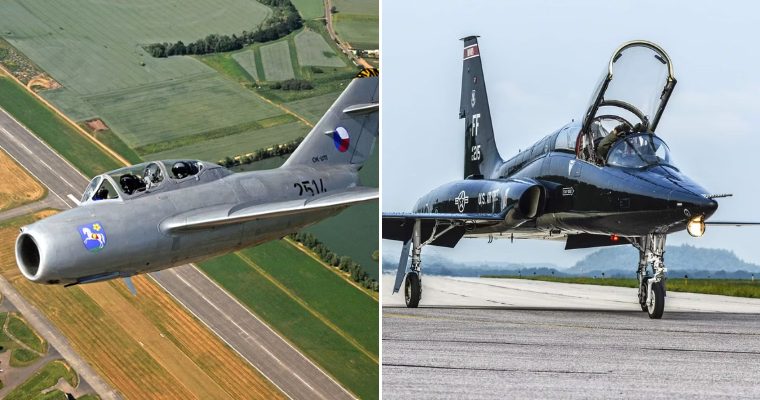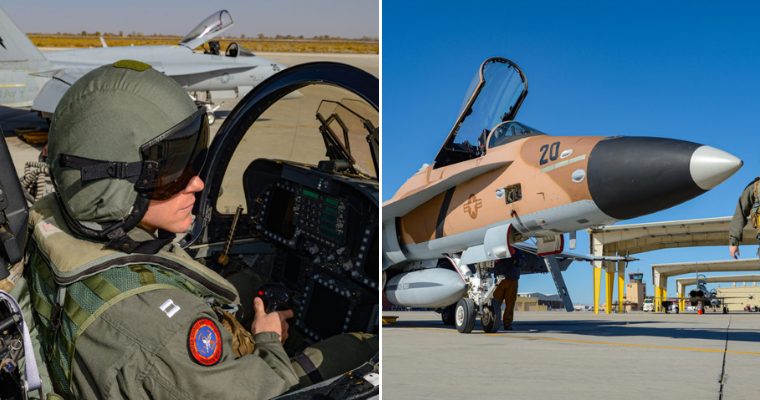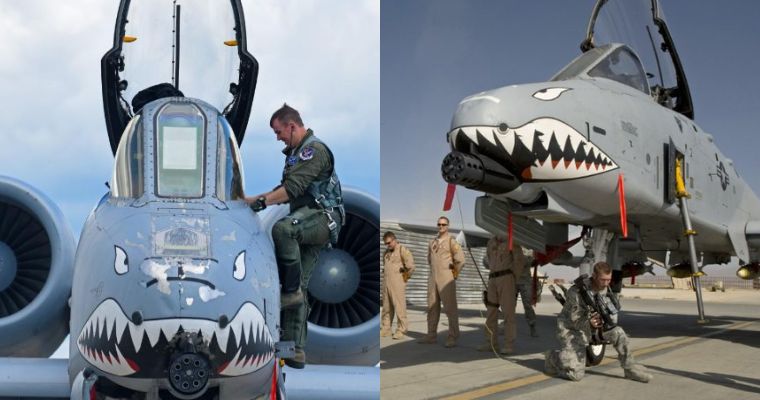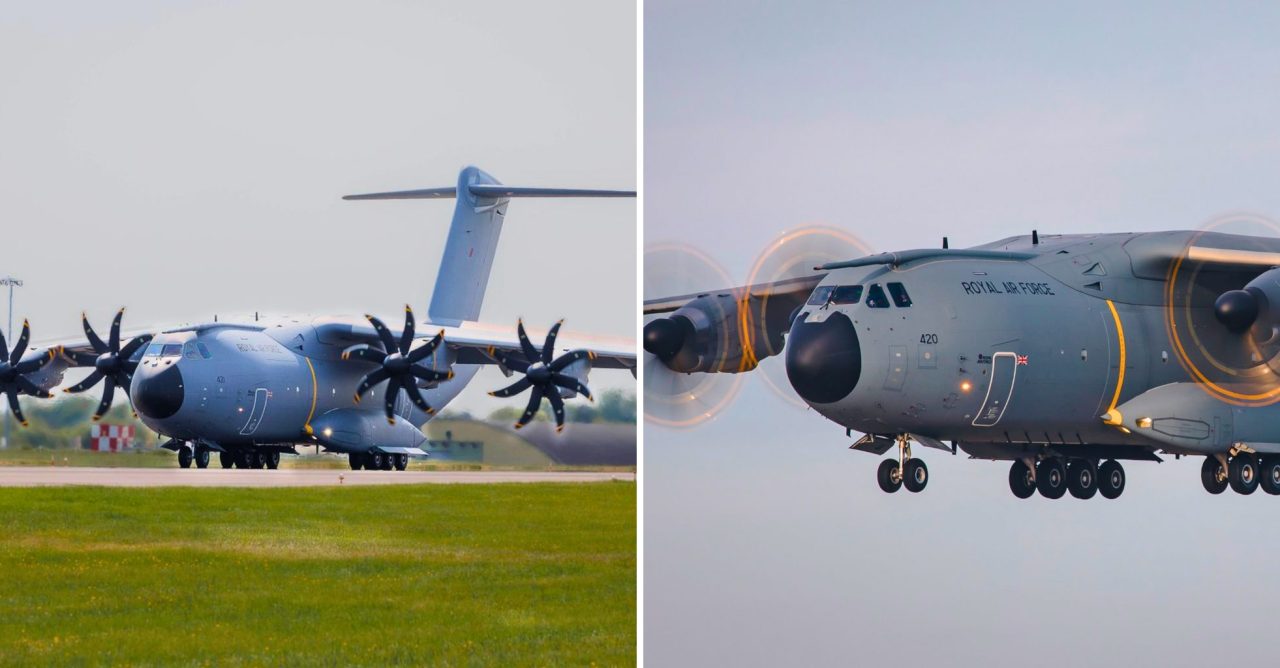More than 25 years after the Lockheed Martin F-22 Raptor took its maiden flight, it remains among the most capable air superiority fighter in the world. The Raptor’s combination of stealth, aerodynamic performance, and mission systems enable unprecedented air combat capabilities. The United States Air Force, which remains the sole operator of the fifth-generation stealth warbird, has a secret ωεɑρσռ that helps keep the aircraft healthy and stealthy – specially-designed robots that were developed to help maintain the aircraft.

Aerobotix worked directly with Lockheed Martin, the Air Force Research Laboratory (AFRL), and Hill Air Force Base (AFB) to modify FANUC robots able to streamline and improve the process of coating F-22 inlets on full-body aircraft. In fact, it was just last month that Aerobotix, an AS9100-certified FANUC robotics integrator, announced that it had supported the 40th restoration of air inlet ducts on F-22 Raptor aircraft, as part of a maintenance contract with the U.S. Air Force. The robotic system is capable of restoring the special coatings on an F-22’s air inlet ducts more quickly than doing so by hand.
The robotic technology was developed with funding from the Air Force’s Small Business Innovation Research (SBIR) and Small Business Technology Transfer (STTR) programs. Aerobotix was thus able to create the automated painting system that restores the performance coatings on Raptor and subsequently refurbished its first F-22 in 2016 while the company is on track to restore its 50th by early 2023.

“Our robotic technology can paint these units using only about 300 hours of labor, rather than 1,600 hours,” said project manager Bret Benvenuti, a senior robotics engineer at Aerobotix. “That’s a labor saving of around 80%, so it really solves the challenge of getting these aircraft back into service quicker. We estimate that since 2016, we’ve helped the Air Force save $8.8 million – $220,000 per aircraft – in maintenance costs.”
Paint the Jet
Prior to the development of the robots, on average, the manual coating process took 36 calendar days. Now thanks to the robotic coating technology, that process shrank to an average of 24 calendar days – an improvement of 12 days – while it also required 80 percent fewer man hours. Coating jet-engine inlets manually has traditionally required hundreds of hours of sanding, painting, and other tasks – all of which must be performed in confined spaces.

Maintainers togged in protective suits, hoods, and respirators must crawl on their hands and knees or lay on their back inside the inlet ducts to re-coat them. Two robots, which can work at the forward and aft ends of the ducts to sand and spray-coat them, can do all that work without suiting up! That ability to refinish engine inlet ducts quickly further means the F-22 can be refurbished and returned to service rapidly. The importance of this maintenance can’t be overstated.
The inlets on jet aircraft ensure smooth airflow into engines despite turbulent air coming at the ducts from multiple directions. Aerobotix’s automated painting solution for inlet duct maintenance not only achieves major labor savings; it also improves accuracy and quality control, giving F-22 aircraft a better performance signature against radar. Moreover, the automated system can apply more coating before the material’s “pot life” expires, and that can also significantly reduce waste. The highly engineered coatings cost around $1,000 per gallon, and more efficient use can save about $40,000 per aircraft.
“When you recoat jet-engine inlets manually, it requires maintenance workers to wear protective suits and respirators and spend hundreds of hours crawling around on their hands and knees inside the inlet,” said project lead Nathan Morgan, an Aerobotix field engineer. “Under those conditions, it’s nearly impossible for workers to manually apply the coatings at consistent speeds and thicknesses. Our robots achieve better results while also curbing the number of worker injuries.” Three of the automated systems have already been installed at the F-22 Depot at the headquarters of the Ogden Air Logistics Complex at Hill AFB, Utah.
Improved Painters

Since being installed, the systems have been enhanced, and recent system upgrades include adjustable spray paths to accommodate aircraft that need only the bypass screen areas of the inlets to be recoated, or to spray the exterior of the inlets’ forward outer lip area. In addition, Coating the lip area while the aft robot is spraying the inlets saves between two and three days in labor. Aerobotix is now looking to also use the robots to simultaneously coat other exterior sections of the fifth-generation aircraft, including chines and tines, which will achieve further labor savings. Aerobotix has also integrated a Terahertz measurement device that delivers efficiency and quality improvements.
The company has already developed similar automated painting systems for coating the F/A-18E and F/A-18F Super Hornet and F-35 Lightning II. “These are some of the Air Force’s best fighter jets, and Aerobotix is proud that our technology is supporting the jets’ combat readiness by getting them back in the sky faster,” added Benvenuti. “When you see the aircraft flying overhead, it really gives you a sense of accomplishment.”





